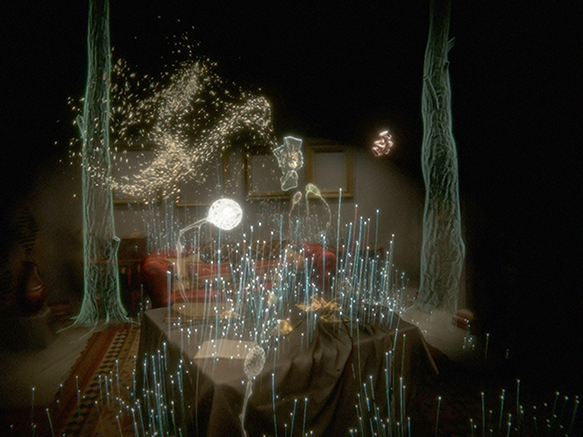Mike Tucker is an interactive designer and developer currently living in London. For the past five years he has worked at Magic Leap, based in Florida, with the official title of Interactive Director, Designer, and Developer. He is somewhat of a quirky guy, who likes to refer to himself in the third person. He attended Virginia Commonwealth University earning a Bachelor of Fine Arts degree in Graphics Design. Mike is working on developing the future of Spatial Computing and hopes the next wave of spatial designers will question expectations of the media, and have the opportunity in designing a mixed reality future.
While initially his art pieces attracted me, learning about how he works inspired me. His search for more reminds me of an entrepreneur I interviewed last year. He has this entrepreneurial spirit, which I admire as I attempt to minor in innovation and entrepreneurship and am very driven to the entrepreneurial world. He started out drawing, but he wanted something more. He was on a quest to find the perfect medium for creating. He went through various platforms, such as websites, mobile apps, etc. until he stumbled upon virtual reality. My favorite piece from him to date is Tónandi, where music and virtual reality interact. With the Icelandic artist Sigur Rod and Magic Leap, he created a work of art where tone spirits (the translation of Tónandi) inhibit your space and together form a music soundscape. You the “player” interact with the virtual creatures to evolve the soundscape. I love this because as I have mentioned in previous looking outwards posts, I am very interested in seeing how the music industry can change with computer interaction.
I will close with highlighting his presentation. I appreciated him starting from the beginning, after giving a general overview, and breaking down what he was going to talk about in his presentation. There were also many visuals, static and moving, to help explain and visualize his work. While he stumbled over his words a bit, I was definitely more engaged by seeing all the images and videos. Even with his being awkward on stage he was very clear and articulate by outlining his talk and providing engaging material to keep the audience from nodding off. I would definitely take these techniques into consideration for future presentations.
Here’s a link to his website:
Here’s the lecture, you’ll have to search it on the page four of the website because apparently it is private:
https://vimeo.com/channels/eyeo2019/page:4
Here’s a video of the project I like most:
And here’s a link to the Magic Leap’s website featuring Tónandi:
https://world.magicleap.com/en-us/details/com.magicleapstudios.tonandi
![[OLD FALL 2020] 15-104 • Introduction to Computing for Creative Practice](wp-content/uploads/2021/09/stop-banner.png)
